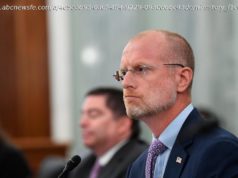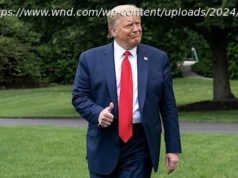Here’s what would be the best way to financially help Puerto Rico, says Ike Brannon, the president of Capital Policy Analytics and a fellow at the Cato Institute.
Puerto Rico was in sad shape even before Hurricane Maria tore through the island. Its economy has been in a recession for over a decade and tens of thousands of skilled workers have fled the island in search of better-paying jobs on the mainland. As president Trump noted in a tweet on Thursday, Puerto Rico’s power grid and infrastructure was in dire need of repair even before the hurricane did its damage. The lackluster economy, combined with successive governments unwilling to make the hard decisions necessary to achieve a balanced budget, left the island with $74 billion of debt and a bankrupt public pension.
The island’s government recently asked for an emergency loan from the federal government to pay for its immediate day-to-day needs, as well as other federal assistance to help pay for the costs of rebuilding the infrastructure damaged in the hurricane. It seems clear that they will get this and then some: While visiting the island recently, President Trump declared that we should just wipe out the entire debt of the island as it begins its rebuilding efforts.
While we must certainly remember that these are U. S. citizens and that it is our duty to help those in need, the president has no power to forgive the debt of Puerto Rico — or any U. S. government, for that matter — and doing such a thing would be a grievous mistake.
Wiping out $72 billion in debt would affect more than just Wall Street bankers: millions of investors have retirement funds in assets invested in Puerto Rican bonds, and that includes tens of thousands of Puerto Rican residents.
What’s more, this would do little to help Puerto Rico reverse the conditions that led its economy to dire straits.
Last year the federal government passed PROMESA, a law that, among other things, created a control board to help the island accomplish some genuine reforms and try to get the economy growing again. However, little reform was actually done — instead the government ignored the law and reduced its debt service payments by nearly 80 percent; the rest of its spending actually increased.
Rather than rely on PROMESA to help Puerto Rico to get its fiscal house in order, the federal government should insist on certain reforms that go along with any financial aid it provides. For starters, this might be a propitious time for its energy mix away from burning oil and towards natural gas, which is cheaper and much cleaner to boot.
On the fiscal side it should force the island to hew to the letter of the law in PROMESA and actually negotiate with its creditors. A good-faith negotiation with them should allow them to finance some of their short-term liquidity needs from their creditors, which is vastly preferable to having the federal government lend them money. Borrowing from the federal government sets a bad precedent that would only perpetuate Puerto Rico’s isolation from capital markets and insulate them from the discipline they would impose.
The important thing to remember is that whatever is done for Puerto Rico will be the template for the states that also have bankrupt pension plans when they can no longer finance their spending. The damage to the island saddens all of us with friends and loved ones who live there, and it is important that we do what we can to alleviate their suffering and help their economy return to normalcy as soon as possible. But we should not let this disaster serve as a free pass for the island to seek a temporary solution for a longer term problem.
Commentary by Ike Brannon, a visiting fellow at the Cato Institute and president of Capital Policy Analytics. He was chief economist and Puerto Rico advisor for John McCain during the senator’s 2008 presidential run. Follow him on Twitter @coachbuckethead.
For more insight from CNBC contributors, follow @CNBCopinion on Twitter.






